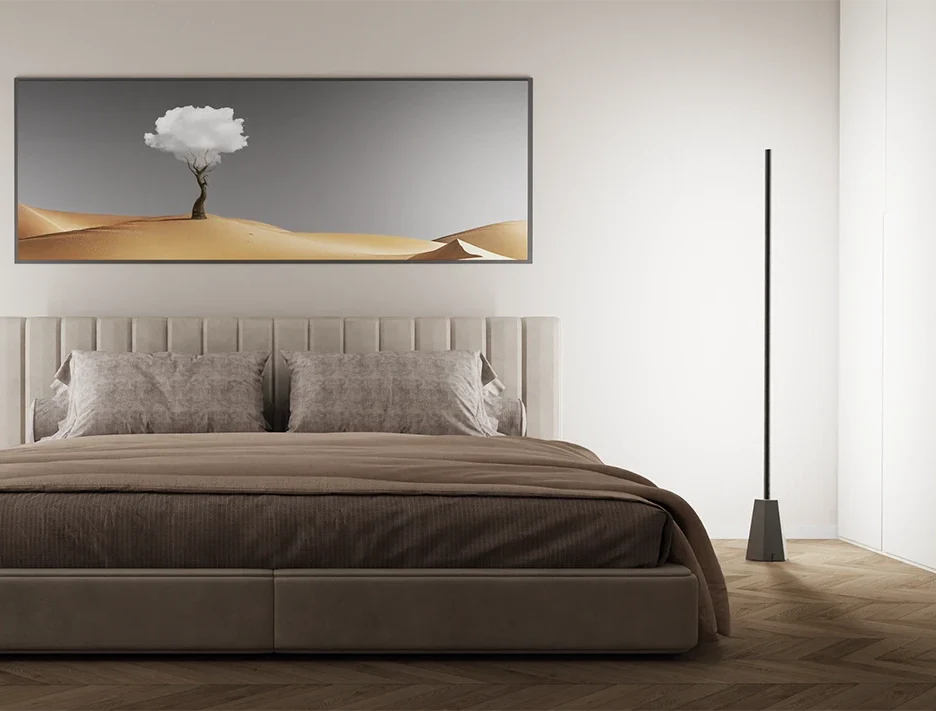Indoor Lights

What's the Best Bias Light? A Guide to the 4 Pro Standards
Let me guess: you've been staring at your screen for hours, your eyes feel strained, and you've heard "bias lighting" is the magic fix. So you typed "best bias lighting for monitor" into Google, hoping for a simple answer.
Here's the thing: the "best" bias light isn't a brand name—it's a set of scientific standards.
This guide won't give you affiliate links or product rankings. Instead, you'll learn exactly why 6500K is the magic number, what "high CRI" actually means, and how to spot marketing gimmicks. By the end, you'll be able to evaluate any bias lighting kit like a pro.
Quick Summary: The 4 Gold Standards
If you're in a hurry, here's what you need to know:
- Color Temperature: Must be 6500K (D65) - the industry standard for neutral white
- Color Rendering Index (CRI): Must be 90+ for accurate color reproduction
- Brightness: Should be ~10% of your monitor's maximum brightness
- Stability: Must be flicker-free (no PWM dimming)
Red flags to avoid: RGB strips, vague terms like "daylight white," missing CRI specs, brightness over 10% of monitor output.
Part 1: The Science Behind Bias Lighting
Why Your Eyes Hurt in the Dark
Picture working late in a pitch-black room with only your monitor glowing. Your iris constantly adjusts between the bright screen and dark surroundings—like a camera aperture opening and closing thousands of times per minute. This creates the eye strain and headaches we all know.
Bias lighting fixes this by providing a gentle ambient glow behind your screen. Instead of a harsh jump from 100% brightness to 0%, you get a smooth transition from 100% to 10%. Your iris can finally settle on a comfortable middle ground.
The Perception Bonus: Better Picture Quality
Here's what sounds like magic but is actually science: bias lighting makes your screen look better through "simultaneous contrast." Your brain judges brightness by comparing objects to their surroundings. A neutral light behind your monitor makes blacks appear deeper and colors more vibrant—without touching any settings.
Part 2: The Four Gold Standards
Standard #1: Color Temperature – 6500K Only
6500K (D65) is the certified standard for "neutral daylight white"—what professional monitors are calibrated to. Any other temperature corrupts your color perception:
- Too warm (3000K): Makes your screen look unnaturally blue
- Too cool (9000K): Makes your screen look muddy and yellow
Standard #2: CRI – 90 or Higher
Ever notice how clothes look like a different color outside the store? That's low CRI at work. CRI measures how accurately a light reveals true colors (0-100 scale). Professional standard is CRI 90+. Low-CRI lights create color casts on your wall that your brain tries to compensate for, skewing your perception of on-screen colors.
Standard #3: Luminance – The 10% Rule
Per the 链接文本>Imaging Science Foundation (ISF), the professional guideline is that bias lighting should be no more than 10% of your display's maximum brightness. Too bright creates glare and defeats the purpose. The light should provide a soft glow—your monitor must remain the brightest object in view.
Standard #4: Stability – No Flicker
Cheap LEDs use Pulse-Width Modulation (PWM) dimming—rapidly turning on/off to control brightness. Though invisible, this flicker causes the very eye strain you're trying to prevent. Quality bias lights use DC or high-frequency dimming for stable, constant output.
Part 3: Practical Application
Reading Spec Sheets Like a Pro
Look for these exact specs:
- Color Temperature: "6500K" or "D65" (not vague terms like "daylight white")
- CRI: "CRI 90+" or "Ra 90+" (if missing, assume it's low)
Avoid these red flags:
- RGB/RGBW strips (they mix colors to fake white, resulting in poor CRI)
- Missing technical specifications
- Marketing terms without numbers
DIY Component Selection
- LED Strip: Must explicitly state 6500K and CRI 90+. Source from photography/film suppliers for accurate specs
- Power: Use quality USB adapters to prevent flicker
- Diffusion: Mount strips in aluminum channels with frosted covers to eliminate hotspots
Installation Best Practices
- Placement: Position strips 2-4 inches from monitor edges (not on the very edge)
- Coverage: Minimum three sides (left, top, right); four sides ideal for large displays
- Orientation: LEDs must face the wall, not outward
- Brightness: Adjust to ~10% of monitor brightness—a soft glow, never a floodlight
Part 4: Common Myths Debunked
Myth #1: "Any LED strip works" Generic strips typically fail all four standards. Their inconsistent color and low CRI add "dirty light" that worsens eye strain.
Myth #2: "RGB strips set to white are perfect" RGB creates white by mixing three colors, resulting in poor CRI and incomplete spectrum. Fine for ambiance, wrong for bias lighting.
Myth #3: "Brighter is better" Excessive brightness creates glare and reflections. Stick to the 10% rule—the goal is reducing contrast, not eliminating it.
Conclusion
You now understand that the "best" bias lighting isn't about brands—it's about meeting four non-negotiable standards: 6500K color temperature, 90+ CRI, proper luminance, and flicker-free operation.
With this knowledge, you can analyze any product's specs, ask the right questions, and build or buy a technically perfect setup. Your eyes will thank you for it.
FAQs
Can I use any cheap LED strip?
No. Cheap strips fail color temp and CRI standards, which can worsen eye strain and cause color distortion.
Can RGB strips set to "white" work as bias lights?
Not recommended. RGB-mixed white has a very low CRI and can't reproduce true colors. It's for ambiance, not accuracy.
Is brighter always better for bias lighting?
No. The ideal brightness is ~10% of your monitor's max brightness. Too bright creates new glare and adds to eye strain.

